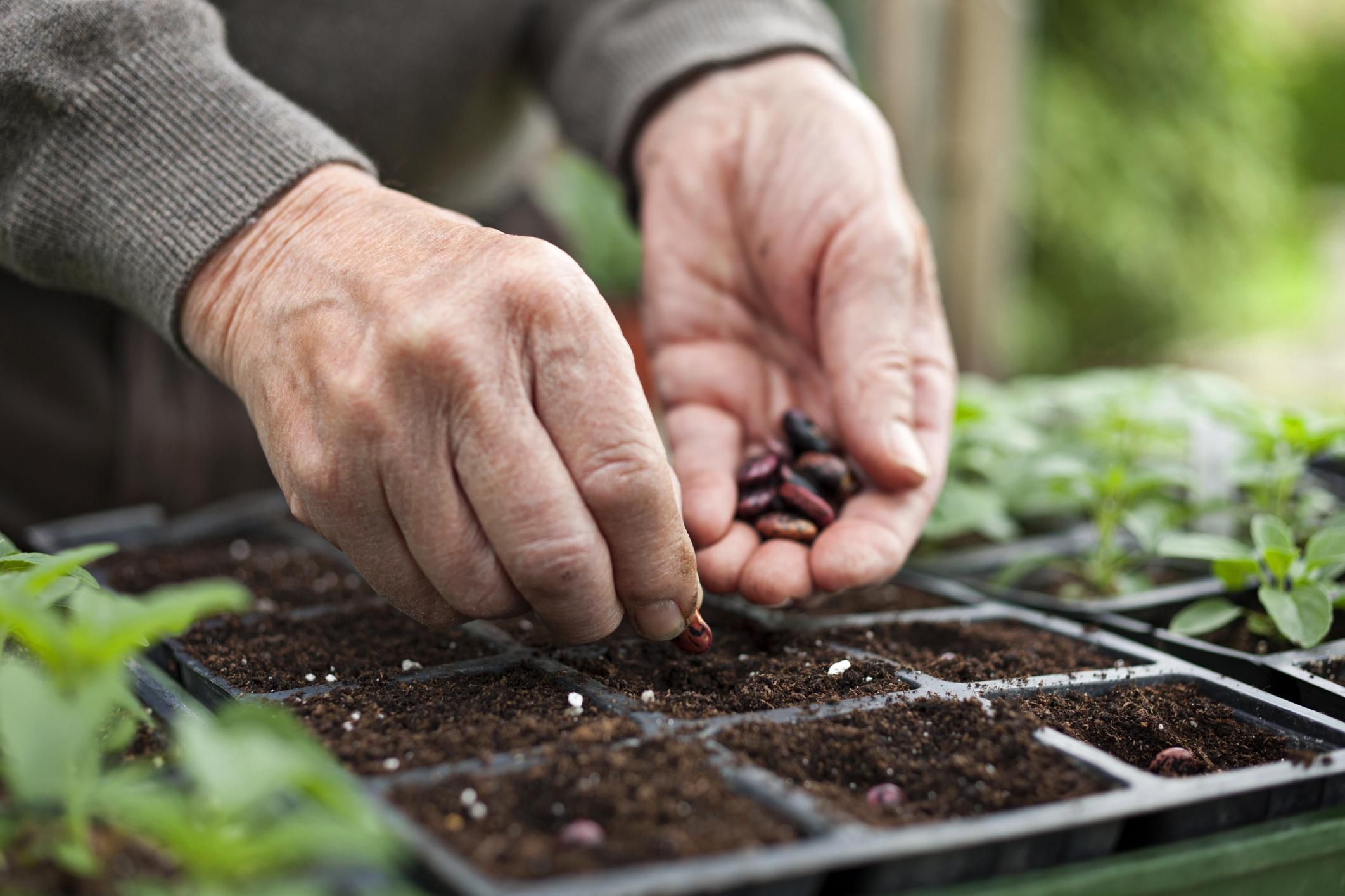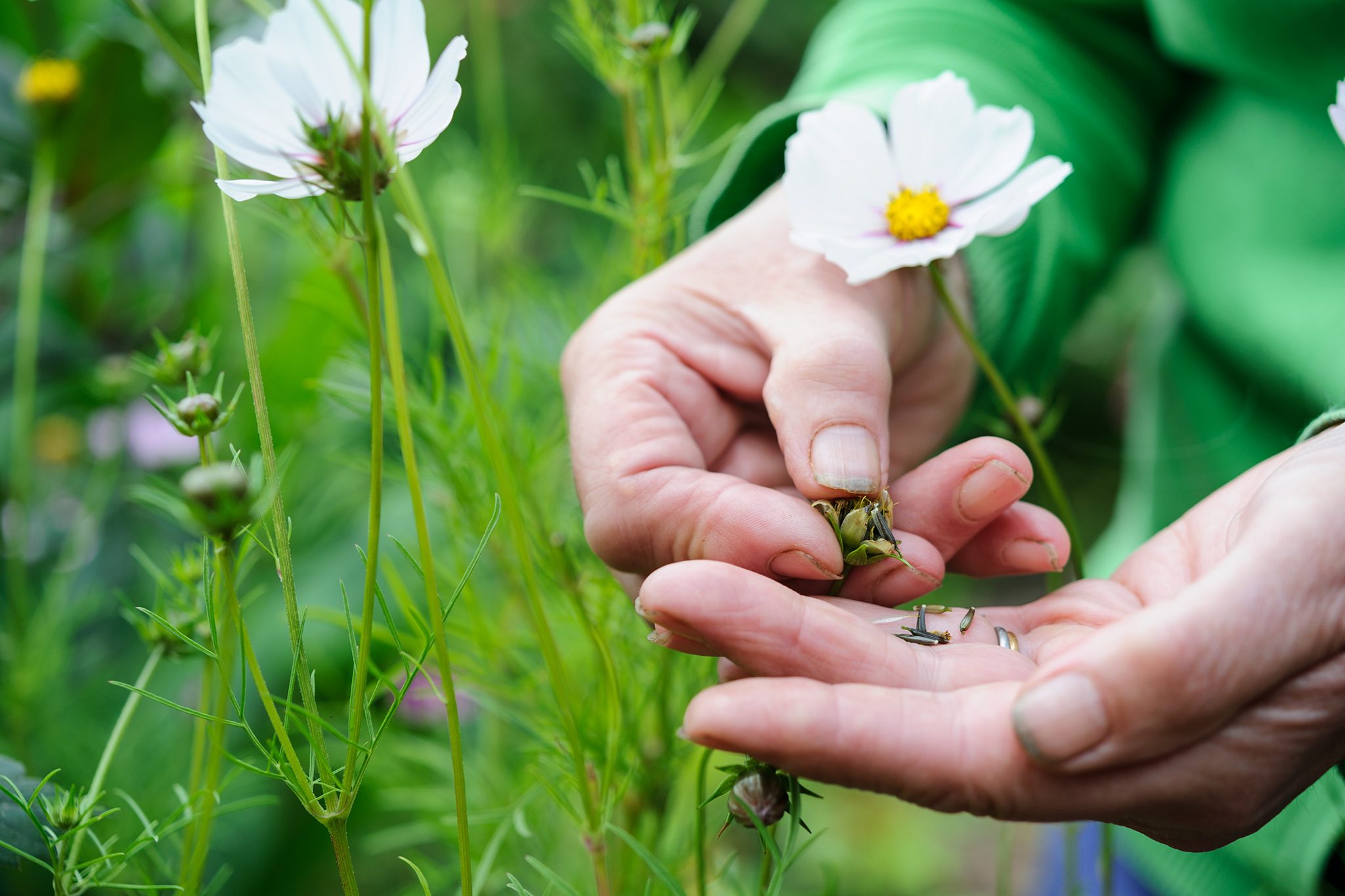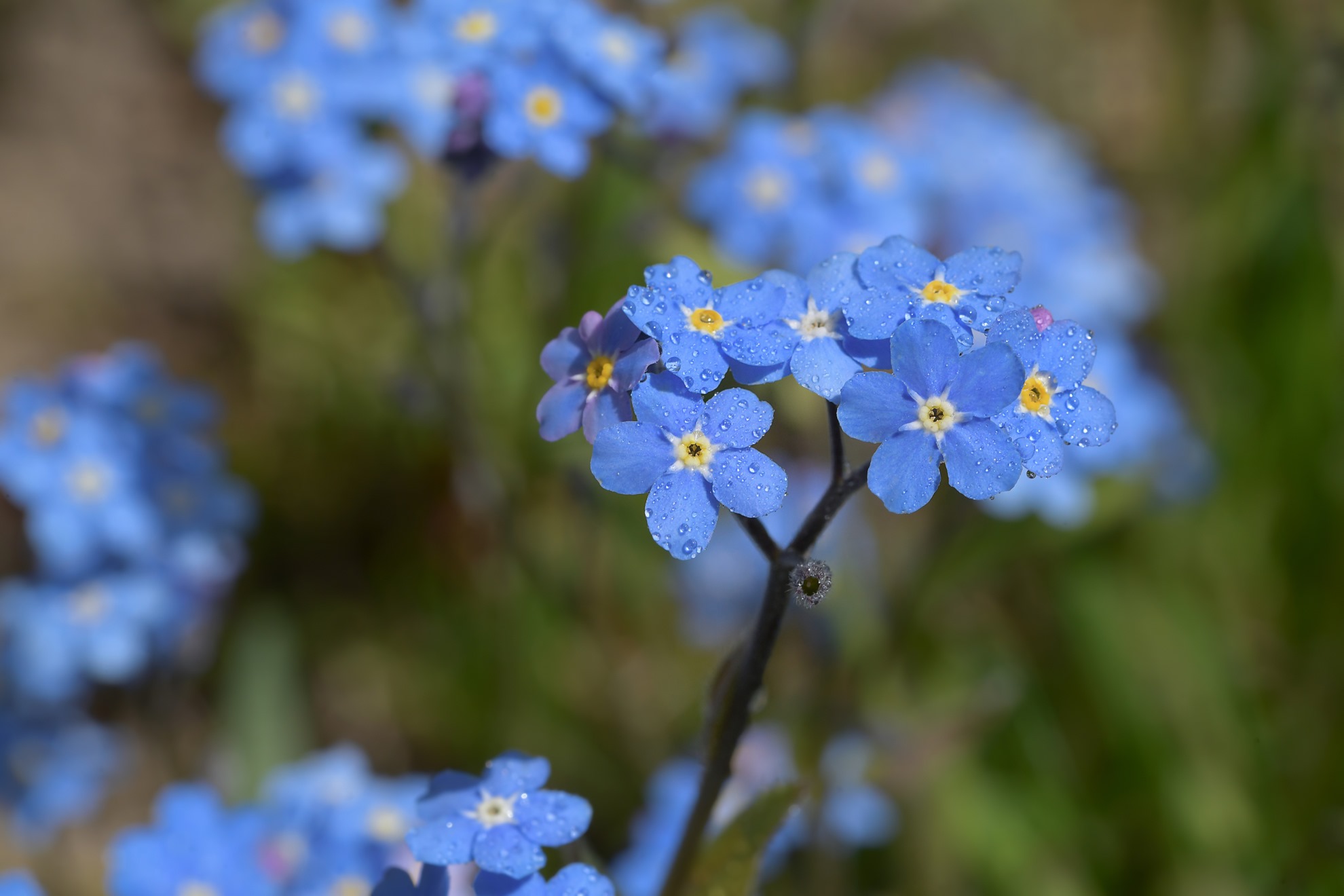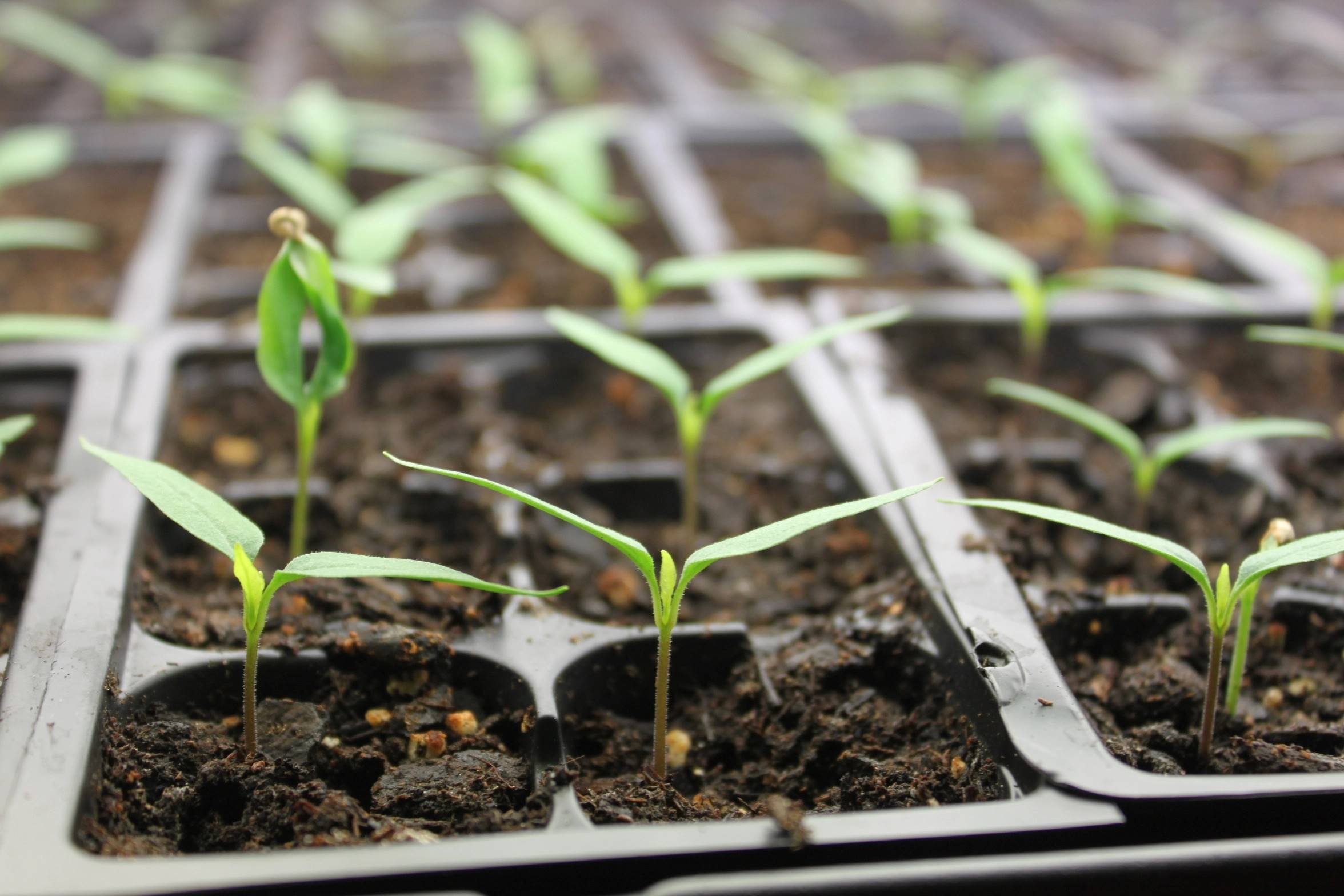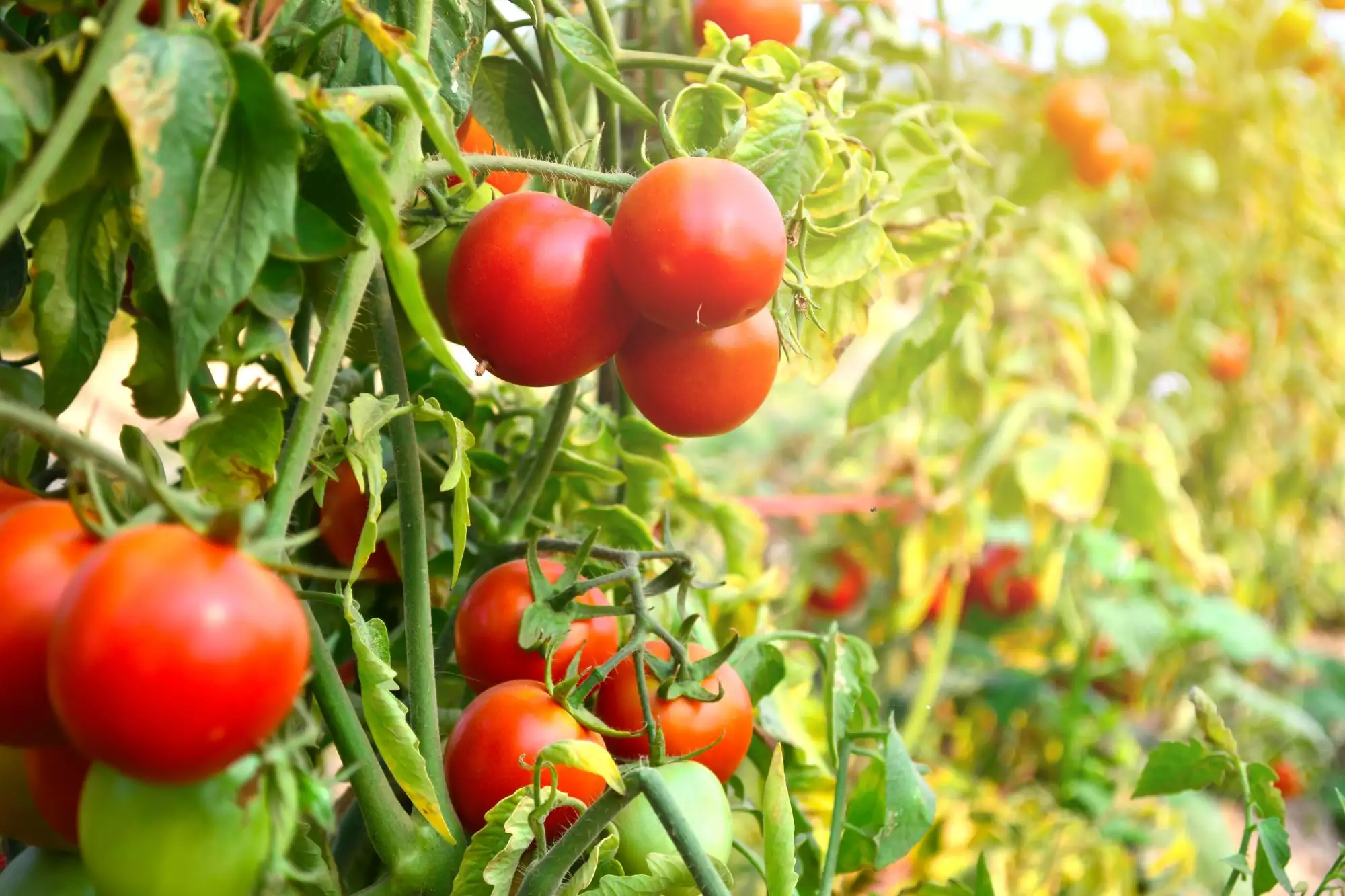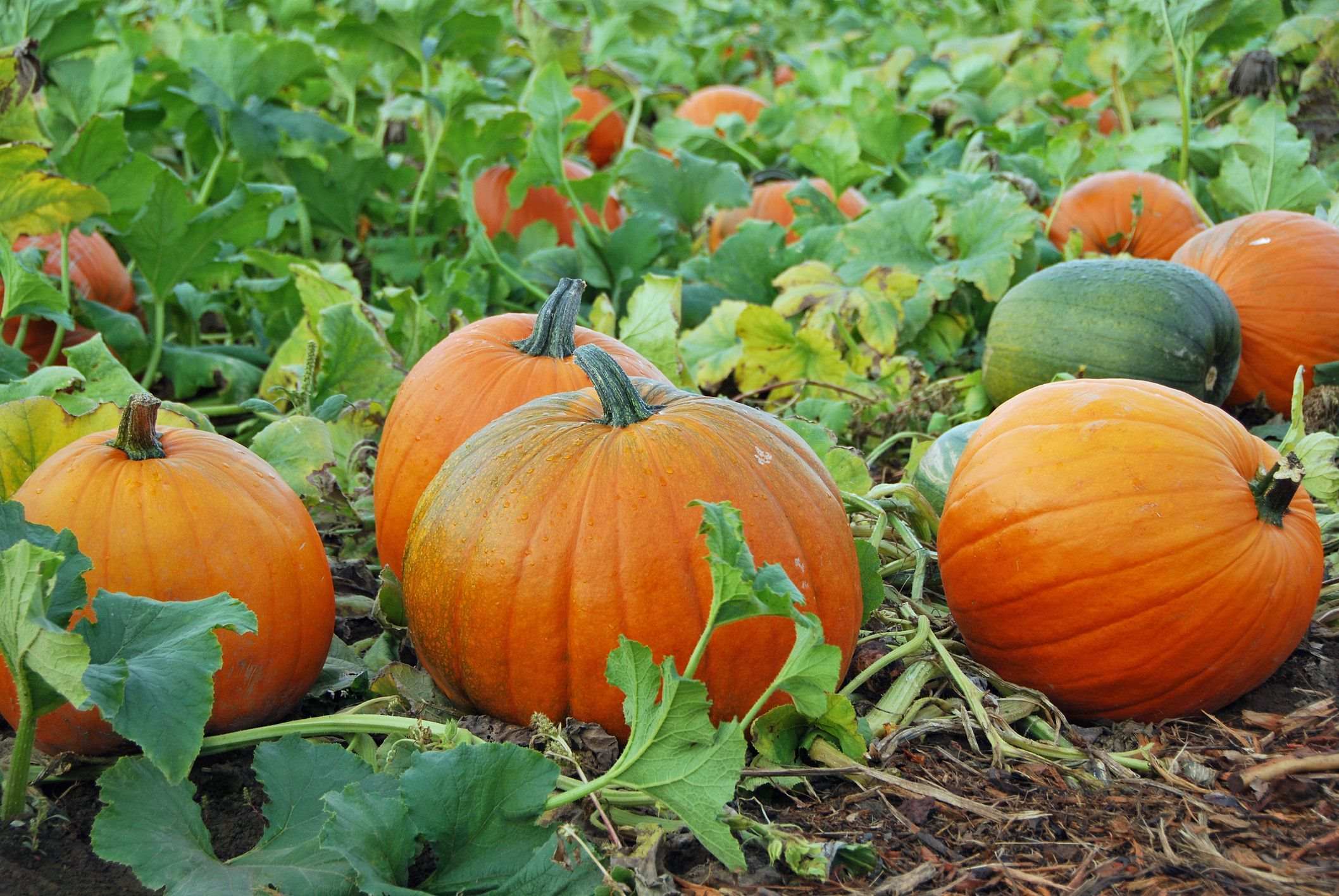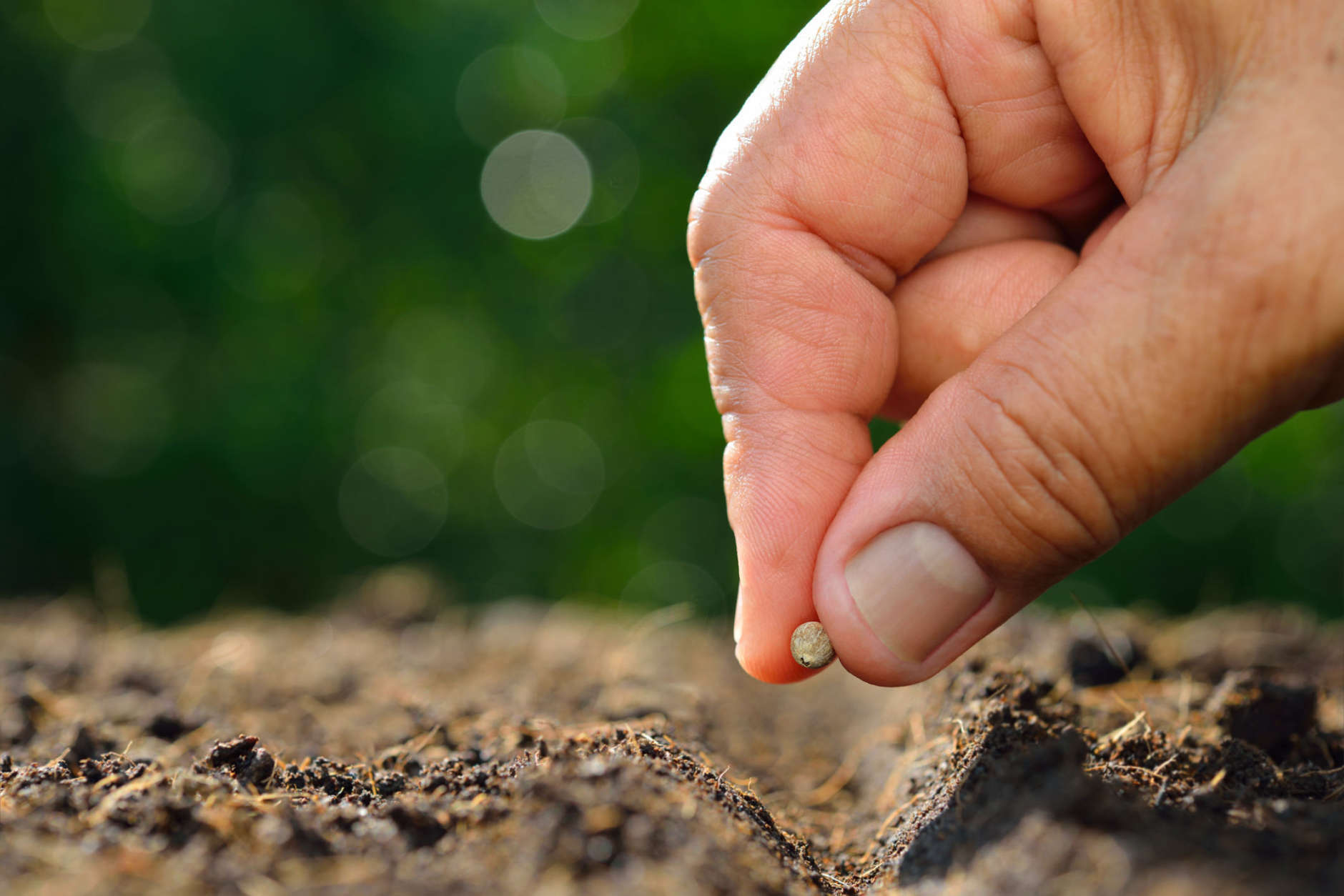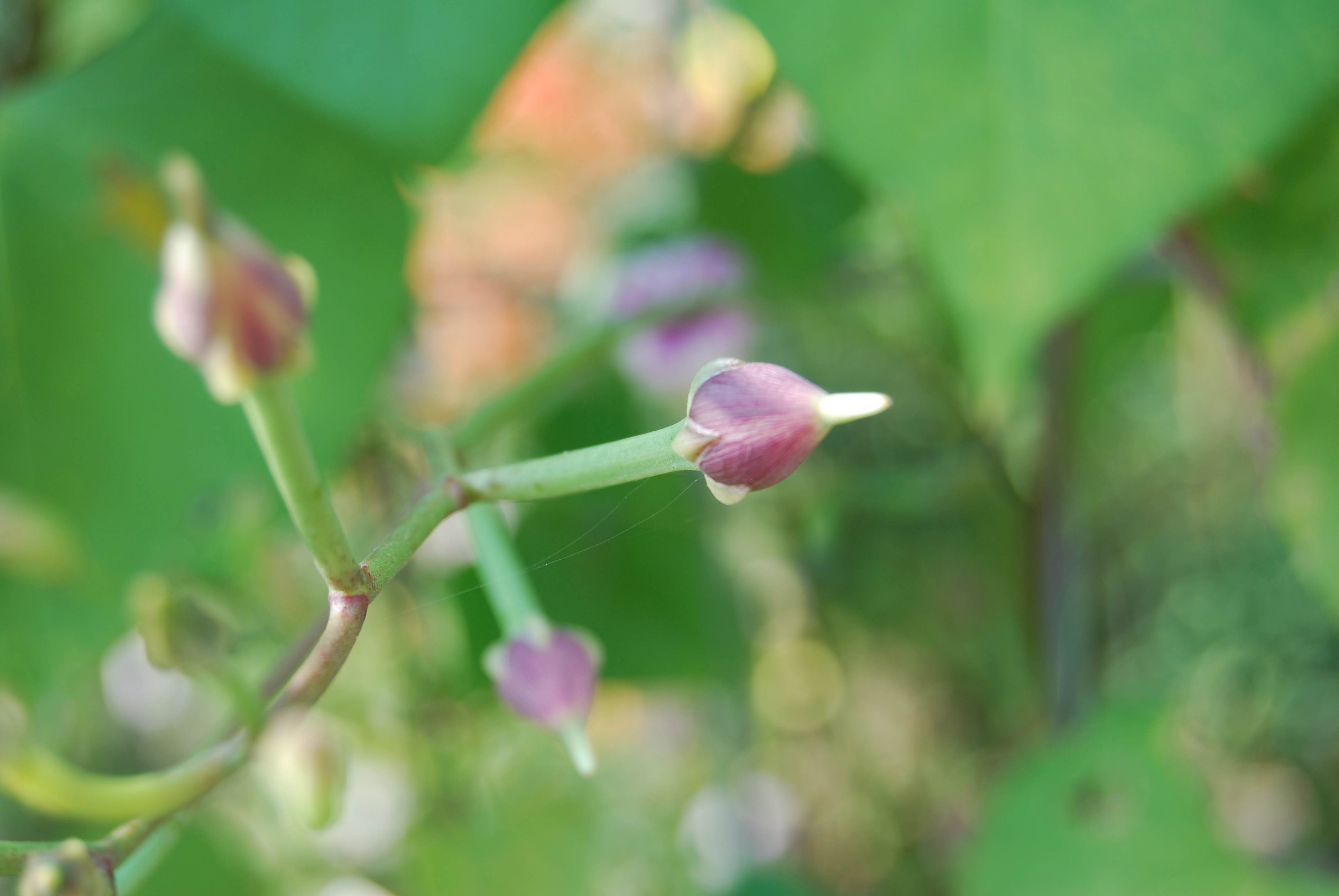Home>Gardening Basics>Understanding Soil>When To Plant An Avocado Seed In Soil


Understanding Soil
When To Plant An Avocado Seed In Soil
Published: February 11, 2024
Learn all about understanding soil and when to plant an avocado seed in soil for optimal growth. Discover the key factors to consider for successful cultivation.
(Many of the links in this article redirect to a specific reviewed product. Your purchase of these products through affiliate links helps to generate commission for Chicagolandgardening.com, at no extra cost. Learn more)
Table of Contents
Introduction
Welcome to the fascinating world of growing avocado plants from seeds! Avocados are not only delicious and nutritious fruits but also have the potential to become beautiful, evergreen houseplants. If you’ve ever wondered how to start an avocado seed in soil, look no further. This comprehensive guide will provide you with all the information you need to successfully grow an avocado plant from seed.
Planting an avocado seed can be a rewarding and educational experience. Watching the seed transform into a vibrant, leafy plant is a remarkable journey. However, it’s important to note that growing an avocado from seed may not always result in a tree that produces fruit. Avocado plants grown from seeds tend to vary in their genetic makeup compared to the parent plant, which means they may not retain the exact characteristics of the fruit from which the seed was taken. Nonetheless, the beauty and satisfaction of growing an avocado plant from seed make it an enjoyable endeavor.
Before you embark on this adventure, there are several key factors to consider. Understanding these factors and following the proper techniques will greatly increase your chances of success. In this guide, we will discuss the optimal time to plant an avocado seed, the necessary preparation steps, the ideal soil conditions, and how to care for your avocado seedling as it grows. We will also address common challenges that may arise and offer solutions to overcome them.
Whether you’re a gardening enthusiast or simply want to try your hand at growing plants from seeds, this guide will equip you with the knowledge and skills needed to plant and care for an avocado seed. So, roll up your sleeves, grab some potting soil, and get ready to embark on a green-thumb adventure with avocados!
Factors to Consider
Before planting an avocado seed in soil, it’s essential to consider a few factors to ensure successful germination and growth. By taking these factors into account, you can create an optimal environment for your avocado seedling to flourish.
1. Seed Quality: The quality of the avocado seed plays a significant role in determining the success of germination. Choose a fresh seed from a ripe avocado, ensuring it is undamaged and free from any mold or rot. The healthier the seed, the better chances it has of sprouting.
2. Germination Time: Avocado seeds can take anywhere from two to six weeks to germinate, depending on various factors such as temperature and seed quality. Patience is key during this period, as it may require some waiting before you see any signs of growth.
3. Seed Dormancy: Avocado seeds have a natural dormancy period that helps protect them from sprouting prematurely. To break this dormancy, a technique called “water germination” can be used, where the seed is partially submerged in water. This encourages the seed to start germinating before planting it in soil.
4. Lighting Conditions: Avocado plants thrive in bright, indirect sunlight. Ensure that your seedling receives at least six hours of sunlight per day. If natural light is limited, you can supplement it with fluorescent grow lights placed at a suitable distance from the plant.
5. Temperature: Avocado plants prefer warm and tropical climates. They thrive in temperatures between 60-85°F (15-29°C). Avoid exposing the plant to temperatures below 50°F (10°C) as it can cause damage or hinder growth.
6. Space availability: Avocado trees can grow quite large if planted outside. If you’re planning to grow the plant indoors, consider the available space and choose a suitable dwarf or miniature variety. This will ensure that the plant can be comfortably accommodated in your living space.
7. Pollination: Avocado plants are generally self-pollinating, but having multiple avocado trees in close proximity can increase the chances of successful pollination and fruit production. If you’re planning on growing your avocado outdoors, consider the availability of other avocado trees in your area to maximize yields.
By taking these factors into account, you can set a strong foundation for your avocado seedling’s growth. It’s important to note that each avocado plant is unique, and experimentation and observation are key to finding the optimal conditions for your specific plant.
Climate Considerations
Avocado plants are native to tropical and subtropical regions, and they require specific climate conditions to grow and thrive successfully. Understanding the climate considerations for avocado plants is crucial for their optimal growth and fruit production.
1. Frost and Cold Tolerance: Avocado plants are sensitive to frost and cold temperatures. They can be damaged or even killed by freezing conditions. If you live in an area prone to cold weather, it’s best to choose cold-hardy avocado cultivars or grow your avocado plant in a container that can be brought indoors during the colder months.
2. Temperature Range: Avocado plants thrive in temperatures between 60-85°F (15-29°C). They can tolerate slightly lower temperatures for short periods but may suffer damage or slow growth if exposed to prolonged periods of extreme heat or cold.
3. Humidity: Avocado plants prefer moderate to high humidity levels, ideally between 60-80%. If you live in a dry climate, you can increase humidity around the plant by using a humidifier or placing a tray filled with water near the plant. Mist the leaves regularly to provide additional moisture.
4. Wind Protection: Avocado plants are susceptible to damage from strong winds. If you live in an area with frequent strong winds, consider planting your avocado tree in a sheltered spot or using windbreaks, such as fences or hedges, to protect the plant.
5. Sun Exposure: Avocado plants require a good amount of sunlight to thrive, but they also benefit from some shade during the hottest parts of the day. Plant your avocado tree in a location that receives partial shade, especially in regions with intense sunlight or high temperatures.
6. Rainfall: Avocado plants prefer well-draining soil and are sensitive to overwatering. They typically require about 1-2 inches of water per week. If you live in an area with heavy rainfall, ensure proper drainage to prevent waterlogged roots, which can lead to root rot and other diseases.
7. Microclimates: In some areas, microclimates may exist that have slightly different temperature, humidity, or wind conditions compared to the surrounding region. Familiarize yourself with the microclimate of your specific location to determine its suitability for growing avocado plants.
By considering these climate factors and creating a suitable environment for your avocado plant, you can promote healthy growth and maximize the chances of fruit production. Remember to monitor the weather conditions in your area and make necessary adjustments to protect your avocado plant from extreme temperatures or unfavorable weather patterns.
Seed Preparation
Properly preparing the avocado seed before planting is essential to maximize its chances of successful germination. This step involves removing the seed from the fruit, cleaning it, and preparing it for the planting process.
1. Removing the seed: Carefully cut open the avocado fruit and gently remove the seed. Avoid damaging the seed or exposing it to excessive force, as this can hinder germination.
2. Cleaning the seed: Rinse the seed under lukewarm water to remove any remaining flesh. Be gentle while cleaning to avoid damaging the protective outer layer of the seed.
3. Identifying the top and bottom of the seed: Avocado seeds have a rounded top and a flat bottom. The top, where the sprout will emerge, is slightly pointy, while the bottom is flat. Orient the seed correctly before planting it.
4. Seed dormancy: Avocado seeds have a natural dormancy period, which can cause delays in germination. To encourage the seed to sprout more quickly, you can break this dormancy by performing the water germination method. Simply suspend the seed partially in water, ensuring that the bottom is submerged, while the top remains exposed to air.
5. Water change: Change the water every few days to prevent stagnation and the growth of bacteria. This will help keep the seed healthy during the dormancy period.
6. Germination signs: As the seed starts to germinate, you will notice the top portion cracking open and a small sprout emerging. This can take anywhere from two to six weeks, depending on various factors such as temperature and seed quality.
7. Transplanting the sprouted seed: Once the seed has developed a root system and a healthy sprout, it is ready for transplantation into soil. Handle the sprouted seed with care and plant it in a suitable potting container.
By properly preparing the avocado seed and encouraging its germination, you increase the likelihood of a successful start to your avocado plant’s growth journey. Remember to be patient during the germination process and handle the seeds gently to avoid any damage. Watching the sprout emerge from the seed is an exciting milestone in your avocado-growing adventure!
Selecting the Right Size Pot
The choice of pot size is crucial when it comes to successfully planting an avocado seed. Selecting a suitable pot ensures that the plant has enough room for its roots to grow and allows for proper drainage. Here are some important considerations when choosing the right size pot for your avocado seedling.
1. Size of the seedling: Choose a pot that accommodates the current size of the seedling. A pot that is too large can cause the soil to stay too moist, leading to root rot, while a pot that is too small can restrict root growth and cause the plant to become root-bound.
2. Depth of the pot: Avocado roots grow deep, so a pot with sufficient depth is necessary. Look for pots with a depth of at least 10-12 inches (25-30 cm) to provide ample space for the roots to develop.
3. Drainage holes: Proper drainage is crucial for the health of the avocado plant. Choose a pot with drainage holes at the bottom to allow excess water to escape. This prevents waterlogging and helps to avoid root rot.
4. Material of the pot: When selecting the pot material, consider factors such as durability, insulation, and breathability. Terracotta or clay pots are popular choices as they are porous and allow for proper airflow and moisture regulation. However, plastic or fiberglass pots can also be suitable if they have drainage holes.
5. Future growth: It’s important to consider the potential growth of the avocado plant when selecting the pot size. While an avocado plant grown from seed may take several years to reach its full size, keeping future growth in mind allows you to choose a pot that can accommodate the plant as it matures.
6. Pot weight: Consider the weight of the pot when filled with soil and a mature avocado plant. A lightweight pot may be easier to move around but can also be more prone to tipping over. A heavier pot provides stability but may be more challenging to move if necessary.
7. Pot drainage saucer: If you choose a pot with drainage holes, it’s advisable to place a drainage saucer underneath to catch the excess water. This prevents water from seeping onto surfaces where it may cause damage or create a mess.
By considering these factors and choosing the right size pot, you provide your avocado seedling with optimal growing conditions. Remember to periodically check the pot size as your avocado plant grows, and if necessary, transplant it into a larger pot to accommodate its expanding root system. Providing the right environment for your avocado seedling will contribute to its overall health and vitality.
Soil Preparation
Preparing the right soil for your avocado seedling is crucial for its growth and development. Avocado plants thrive in well-draining soil that is rich in nutrients. Here are some essential steps to prepare the optimal soil for your avocado plant.
1. Soil composition: Avocado plants prefer a well-draining soil mixture that retains some moisture without becoming waterlogged. A recommended mix is equal parts of peat moss, perlite, and potting soil. This combination provides good drainage while retaining enough moisture for the roots.
2. pH level: Avocado plants prefer slightly acidic to neutral soil with a pH range between 6 and 7. Test the soil’s pH level using a pH testing kit, and amend it if necessary by adding lime to raise the pH or elemental sulfur to lower it.
3. Organic matter: Incorporate organic matter, such as compost or well-rotted manure, into the soil mixture. This helps improve soil fertility, moisture retention, and overall nutrient availability for the avocado plant.
4. Nutrient requirements: Avocado plants benefit from a balanced nutrient supply. Prior to planting, mix in a slow-release organic fertilizer that is specifically formulated for fruit trees or citrus plants. This will provide a steady supply of nutrients for your avocado seedling as it grows.
5. Soil moisture: Avocado plants prefer slightly moist soil but are susceptible to root rot in waterlogged conditions. Ensure that the soil has good drainage to prevent excess moisture around the roots. Regularly check the moisture level by sticking your finger about an inch into the soil. Water the plant when the top inch of soil feels dry.
6. Soil texture: The ideal soil texture for avocado plants is loamy, which provides a good balance of water retention and drainage. Avoid using heavy clay soils that tend to become compacted and poorly drained.
7. Mulching: After planting the avocado seedling, apply a layer of organic mulch around the base of the plant, leaving space around the stem. Mulching helps retain soil moisture, suppresses weed growth, and adds organic matter as it breaks down over time.
By preparing the right soil mixture and ensuring proper drainage and nutrient availability, you create an environment that promotes healthy root development and overall growth for your avocado seedling. Remember to regularly monitor the soil moisture level and adjust watering accordingly, as consistent and appropriate moisture is crucial for the plant’s success.
Planting the Avocado Seed
Now that you’ve prepared the soil and selected the right pot, it’s time to plant your avocado seed. Follow these steps to ensure proper planting and give your seedling the best chance of success.
1. Selecting the planting location: Choose a location that provides ample sunlight and is protected from harsh winds. If you plan to keep the avocado plant indoors, place it near a window that receives bright, indirect sunlight.
2. Digging the hole: Dig a hole in the center of the pot that is slightly larger than the size of the avocado seed. Ensure the hole is deep enough to accommodate the entire seed along with its pointed end facing up and the flat end facing down.
3. Planting the seed: Place the avocado seed in the hole with the pointed end facing up. The top portion of the seed should be slightly above the soil level. Gently press the soil around the seed to secure it in place.
4. Watering: Give the newly planted seed a thorough watering, ensuring that the soil is evenly moist but not waterlogged. Water from the base of the plant to avoid splashing soil onto the seed.
5. Providing support: If the avocado seedling is young and delicate, it may benefit from the support of a wooden skewer or toothpick. Carefully insert the skewer into the soil next to the seed to provide stability as the plant grows.
6. Protecting from extreme temperatures: Avocado plants are sensitive to extreme temperatures, particularly cold weather. If you live in a region with cold winters, consider placing the pot near a window with sufficient sunlight during the day and moving it away from drafts during the night.
7. Patience and monitoring: Germination can take up to several weeks, so be patient and monitor the seedling regularly. Keep the soil consistently moist, but avoid overwatering to prevent root rot. In time, you will see the sprout emerge from the seed, indicating successful germination.
By following these steps and providing the necessary care, your avocado seedling will establish itself and begin its journey towards becoming a healthy and vibrant avocado plant. Remember to be patient, as it may take some time for the seedling to develop into a mature and fruit-bearing tree.
Caring for the Avocado Seedling
Once your avocado seedling has emerged and begun its growth journey, it’s important to provide proper care and attention to ensure its healthy development. Here are some essential aspects to consider when caring for your avocado seedling.
1. Watering: Avocado seedlings require regular watering to keep the soil evenly moist, but not waterlogged. Check the moisture level by sticking your finger about an inch into the soil, and water when the top inch feels dry. Avoid overwatering, as it can lead to root rot.
2. Sunlight: Avocado plants thrive in bright, indirect sunlight. Place your seedling near a window that receives ample sunlight, or use grow lights if natural light is limited. Rotate the pot occasionally to ensure even exposure to sunlight and prevent uneven growth.
3. Fertilization: Feed your avocado seedling with a balanced, slow-release organic fertilizer designed for fruit trees or citrus plants. Follow the package instructions for dosage and frequency. Be cautious not to over-fertilize, as excessive nutrients can harm the plant.
4. Pruning: Once your avocado seedling has developed multiple branches, you can start pruning to encourage a bushier growth habit. Trim the top growth to promote lateral branching. Avoid heavy pruning in the early stages, as it can stress the young seedling.
5. Pest and disease control: Monitor your avocado seedling for any signs of pests, such as aphids or spider mites. If detected, use organic pest control methods or insecticidal soap to eliminate the infestation. Additionally, watch out for common avocado diseases like root rot, and promptly address any signs of infection.
6. Support and staking: As your avocado seedling grows taller and develops a thicker stem, it may require support to prevent it from bending or breaking under its own weight. Use stakes or bamboo sticks to provide support and tie the stem if needed.
7. Regular maintenance: Regularly inspect your avocado seedling for any yellowing leaves or signs of stress. Remove any dead, damaged, or diseased leaves to promote healthy growth. Keep the area around the plant clean from fallen debris and regularly remove weeds.
By providing proper care and attention, your avocado seedling will continue to grow into a thriving plant. Keep in mind that avocado plants are slow growers, and it may take several years before your seedling reaches maturity and starts producing fruit. Be patient, enjoy the process, and appreciate the beauty of nature as your avocado plant grows.
Potential Challenges and Solutions
While growing an avocado seedling can be a rewarding experience, there are some challenges that may arise along the way. Being aware of these challenges and knowing how to address them can help ensure the health and vitality of your avocado plant. Here are some potential challenges and their solutions:
1. Root rot: Overwatering or poorly draining soil can cause root rot in avocado plants. To prevent this, ensure that the soil has good drainage and avoid overwatering. Allow the soil to dry out slightly between waterings.
2. Nutrient deficiencies: Avocado plants may exhibit nutrient deficiencies, such as yellowing leaves or stunted growth. This can often be addressed by providing balanced fertilization and ensuring the plant has access to essential nutrients. Adjust the fertilizer regimen if necessary, and consider using a trace element supplement specific to fruit trees if deficiencies persist.
3. Insufficient sunlight: Avocado plants require adequate sunlight to thrive. If your plant isn’t receiving enough sunlight indoors, consider supplementing with grow lights. Place the lights at an appropriate distance from the plant and provide them for at least 12-16 hours each day.
4. Cold sensitivity: Avocado plants are susceptible to cold temperatures, especially young seedlings. Protect your plant from frost or freezing temperatures by moving it indoors or providing adequate insulation using protective coverings or plant blankets.
5. Pests and diseases: Common pests that can affect avocado plants include aphids, spider mites, and scale insects. Monitor your plant regularly for signs of infestation. Use organic pest control methods or insecticidal soap to eliminate pests. Additionally, be vigilant for signs of diseases such as root rot or fungal infections, and promptly address them by adjusting watering practices or using appropriate fungicides.
6. Leaf browning or leaf drop: Avocado plants may experience leaf browning or leaf drop due to various causes, including environmental stress, improper watering, or nutrient deficiencies. Ensure you are providing the right amount of water, maintaining the appropriate humidity level, and addressing any nutrient deficiencies. Adjusting these factors should help the plant recover and regain healthy foliage.
7. Insufficient pollination: If you’re growing your avocado plant outdoors, insufficient pollination may result in poor fruit set. Encourage pollination by providing a conducive environment for pollinators such as bees or consider hand-pollination techniques to increase fruit production.
By being proactive and addressing these potential challenges promptly, you can maintain the health and vitality of your avocado plant. Remember to closely observe your plant, regularly inspect for any signs of problems, and take appropriate measures to provide the best care for your avocado seedling.
Harvesting the Avocado Fruit
After years of care and patience, your avocado seedling has grown into a mature tree that is ready to bear fruit. Harvesting avocados at the right time ensures optimal flavor and texture. Here are some essential tips for harvesting your avocado fruit:
1. Determining ripeness: Avocados do not ripen on the tree. Instead, they mature and ripen after being harvested. The timing of the harvest largely depends on the variety of avocado you are growing. Most avocado varieties are ready to harvest when the fruit reaches its full size and the skin changes color. Ripe avocados give slightly when gently squeezed, but they shouldn’t feel too soft.
2. Harvesting technique: To harvest avocados, gently twist and pull the fruit from the tree. Avoid pulling on the stem, as this can cause damage to the fruit and tree. Use pruning shears or a sharp knife if the stem does not detach easily from the tree.
3. Post-harvest handling: Handle avocados with care to avoid bruising or damaging the fruit. Place harvested avocados in a basket or container lined with a soft material, such as a towel or straw, to cushion them and prevent injury.
4. Ripening avocados: If your avocados are not ripe when harvested, you can speed up the ripening process by placing them in a paper bag with a ripe banana or apple. The ethylene gas produced by the banana or apple will help hasten the ripening of the avocados.
5. Storing avocados: Once your avocados are ripe and ready to eat, you can store them in the refrigerator for a few days to slow down the ripening process. If you have a surplus, you can also freeze mashed avocado or make avocado-based recipes for future enjoyment.
6. Enjoying the fruit: Avocados can be used in a variety of dishes, from guacamole and salads to sandwiches and smoothies. The rich, creamy texture and mild, buttery flavor make avocados a versatile ingredient in both savory and sweet recipes. Experiment with different recipes to fully enjoy the delicious fruits of your labor.
7. Pruning and caring for the tree: After harvesting the fruit, continue caring for the avocado tree by pruning any dead or damaged branches and providing regular watering and fertilization. This helps maintain the health and productivity of the tree for future harvests.
Harvesting avocados from your own tree is a rewarding experience that allows you to savor the fruits of your labor. By following these guidelines and enjoying the delicious avocados, you can fully appreciate the journey from a small seed to a tree that bears the bountiful gifts of nature.
Conclusion
Growing an avocado plant from seed can be a fascinating and rewarding experience. With proper knowledge and care, you can watch a small seed transform into a thriving avocado tree that produces delicious fruits. Throughout the process, it’s important to consider various factors such as seed quality, climate conditions, soil preparation, and care for the seedling.
From selecting the right size pot to preparing the ideal soil mixture, each step plays a crucial role in nurturing the seedling’s growth. Providing adequate sunlight, water, and nutrients, as well as addressing potential challenges such as pests and diseases, allows the avocado plant to flourish.
Patience is key when growing avocados, as it may take several years for the tree to reach maturity and bear fruit. However, the wait is well worth it, as harvesting your own avocados and enjoying their creamy texture and rich flavor is a satisfying reward.
Remember, each avocado plant is unique, and it’s important to adapt your care based on the specific needs of your seedling. Observe your plant closely, make adjustments as needed, and enjoy the journey of tending to your avocado tree.
Whether you’re an experienced gardener or a beginner, growing an avocado plant from seed allows you to connect with nature, learn about plant life cycles, and savor the joy of cultivating your own food. So, grab your gardening gloves, gather your patience, and embark on this green-thumb adventure with avocados!
